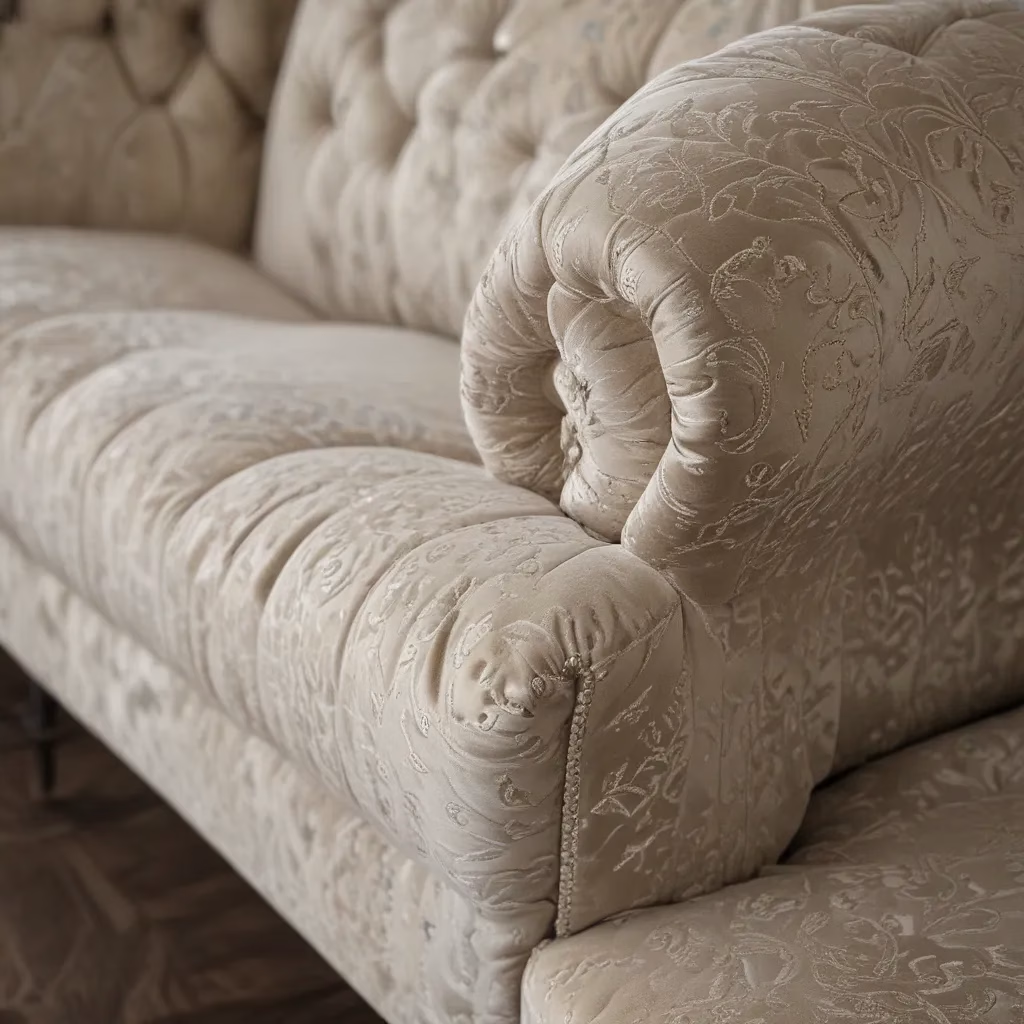
Sofa Buying Considerations: Selecting the Right Size for Your Space
When it comes to furnishing your living room, the sofa is undoubtedly the star of the show. As the central piece that sets the tone for the entire space, choosing the right sofa can be a daunting task. From evaluating the perfect size and dimensions to selecting the ideal fabric and upholstery, there are numerous factors to consider.
As an experienced furniture consultant and interior design writer for SofaSpectacular.co.uk, I’m here to guide you through the process of selecting the perfect sofa for your home. In this comprehensive article, we’ll dive deep into the key considerations to double-check that you make an informed decision that not only looks stunning but also provides the utmost comfort and functionality.
Measuring Your Living Space
The first and most crucial step in choosing a sofa is to accurately measure your living room. This will help you determine the maximum size that can comfortably fit in the space without overwhelming the room or creating obstructions. Start by measuring the length and width of the area where you plan to place the sofa. Be mindful of any existing furniture, walkways, or architectural features that may impact the available space.
As a general rule, you’ll want to leave at least 18 to 24 inches of clearance on each side of the sofa to allow for easy movement and access. Additionally, consider the height of the sofa in relation to the ceiling and surrounding furniture. Aim for a piece that complements the scale of the room without towering over the space.
Sofa Size Recommendations
Once you’ve mapped out the dimensions of your living room, it’s time to determine the appropriate sofa size. Here are some general guidelines to consider:
- Small Spaces: For compact living rooms or apartments, opt for a loveseat (54-72 inches wide) or a smaller, tufted sofa (72-84 inches wide).
- Medium Rooms: In a medium-sized living room, a standard sofa (84-96 inches wide) or a sectional (100-120 inches wide) can work beautifully.
- Large Spaces: For spacious living rooms, a large sofa (96-120 inches wide) or a multi-piece sectional (120-144 inches wide) can create a dramatic focal point.
Remember, these are just general recommendations, and the perfect sofa size will ultimately depend on the specific layout and proportions of your living room. Utilizing painter’s tape or cardboard cutouts to visualize different sofa sizes can be a helpful exercise in determining the best fit.
Balancing Scale and Proportions
In addition to the overall dimensions, it’s crucial to consider the scale and proportions of the sofa in relation to the rest of your living room décor. A sofa that is too small for the space can make the room feel unbalanced and underwhelming, while a sofa that is too large can overwhelm the space and disrupt the visual flow.
To achieve a harmonious look, aim for a sofa that is approximately two-thirds the length of the wall it’s placed against. This will help create a sense of proportion and double-check that the sofa doesn’t dominate the room. Additionally, pay attention to the height of the sofa in relation to other furniture and architectural features. As a general guideline, the sofa’s arm height should be around the same level as the arms of any adjacent chairs or loveseats.
Fabric and Upholstery Selection
The fabric and upholstery of your sofa not only contribute to its overall aesthetic but also play a significant role in its durability and maintenance. When selecting the perfect material, consider the following factors:
Fabric Types and Durability: Opt for durable fabrics like microfiber, leather, or performance fabrics that can withstand regular use and resist wear and tear. These materials are often more pet- and family-friendly, making them excellent choices for high-traffic living rooms.
Upholstery Care and Maintenance: Think about the level of effort you’re willing to put into maintaining your sofa. Fabrics like velvet and chenille may require more frequent cleaning, while microsuede and easy-care upholstery options are generally lower-maintenance.
Texture and Pattern Considerations: Experiment with different textures and patterns to add visual interest to your living room. A tufted or nailhead-trimmed sofa can introduce a touch of sophistication, while a patterned or textured upholstery can become a statement piece.
Living Room Layout Tips
Once you’ve selected the perfect sofa, it’s time to consider how it will fit into the overall layout of your living room. Proper furniture placement can enhance the flow and functionality of the space, creating a harmonious and inviting atmosphere.
Space Planning and Furniture Arrangement: Arrange your sofa in a way that encourages conversation and promotes social interaction. Consider placing it at an angle or perpendicular to the television to create a cozy seating area. If you have a sectional, position it to divide the living room into distinct zones.
Sofa Placement and Traffic Flow: double-check that that the sofa doesn’t obstruct major walkways or create bottlenecks in the room. Leave enough space for people to move freely around the furniture without feeling cramped.
Complementary Décor Elements: Pair your sofa with complementary pieces, such as accent chairs, coffee tables, and area rugs, to create a cohesive and visually appealing living room design. Consider the colors, textures, and styles of these additional furnishings to achieve a harmonious look.
Sofa Cleaning and Maintenance
Maintaining the cleanliness and longevity of your sofa is essential for preserving its appearance and ensuring your investment lasts for years to come. Here are some tips to keep your sofa looking its best:
Upholstery Cleaning Methods: Regularly vacuum the sofa’s surface to remove dirt and debris. For deeper cleaning, consult the manufacturer’s instructions or consider professional upholstery cleaning services for the best results.
Spot Removal and Stain Treatment: Act quickly when dealing with spills or stains. Blot the affected area with a clean, dry cloth, and use a mild, sofa-safe cleaner to address the issue. Avoid rubbing the stain, as this can cause it to spread.
Long-Term Preservation Techniques: Rotate and flip the sofa cushions periodically to double-check that even wear. Consider using sofa covers or throws to protect the upholstery from direct sunlight and everyday use.
Styling for Comfort and Aesthetics
Crafting a visually appealing and comfortable living room is the ultimate goal when selecting a sofa. Striking the right balance between form and function is essential.
Ergonomic Design Features: Look for sofas with memory foam or down-filled cushions that provide ample support and sink-in comfort. Adjustable headrests and armrests can also enhance the overall user experience.
Cushion Comfort and Support: double-check that the sofa’s cushions are firm yet plush, offering the perfect level of comfort for extended lounging or socializing.
Visual Balance and Cohesion: Choose a sofa that complements the existing décor in your living room. Consider the color, texture, and overall style to create a harmonious and visually appealing space.
Sofa Construction and Quality
The quality of a sofa’s construction is a crucial factor that often determines its durability and long-term performance. When evaluating potential purchases, pay attention to the following aspects:
Frame Materials and Craftsmanship: Look for sofas with solid wood or metal frames that are sturdy and well-built. Avoid flimsy or particle board constructions, as they may not withstand regular use.
Suspension and Support Systems: Examine the sofa’s suspension system, which includes the springs and webbing that provide structural support. Quality systems, such as eight-way hand-tied coils or sinuous springs, can enhance the sofa’s overall comfort and longevity.
Durability and Longevity Considerations: Consider the sofa’s warranty and any additional guarantees offered by the manufacturer. These can provide valuable insights into the product’s expected lifespan and the brand’s commitment to quality.
Budgeting and Cost Factors
Sofa prices can vary widely, ranging from budget-friendly options to high-end investments. When determining your budget, consider the following factors:
Price Range Considerations: Establish a realistic budget that aligns with your needs and preferences. Keep in mind that higher-quality materials and construction often come with a higher price tag.
Value-Added Features: Look for sofas that offer additional features, such as built-in recliners, storage ottomans, or chaise lounge configurations, which can enhance both the functionality and the overall value of your purchase.
Financing and Payment Options: Explore financing opportunities or payment plans offered by retailers to make your dream sofa more accessible. Just be mindful of any interest rates or additional fees associated with these options.
Sofa Delivery and Installation
The final step in the sofa-buying process is ensuring a smooth delivery and installation experience. Consider the following:
Transportation and Logistics: Inquire about the retailer’s delivery options and any size or weight restrictions that may apply. Arrange for assistance with moving and positioning the sofa, if necessary.
Assembly and Placement: If your sofa requires assembly, review the instructions carefully or seek professional help for a stress-free setup. Properly position the sofa in your living room, taking care not to damage your floors or walls.
Warranty and After-Sales Support: Familiarize yourself with the sofa’s warranty and any available after-sales services, such as repair or replacement. This can provide added peace of mind and double-check that your investment is well-protected.
By considering these key factors, you’ll be well on your way to finding the perfect sofa that not only enhances the aesthetics of your living room but also provides unparalleled comfort and functionality. Happy shopping, and enjoy transforming your space with the ideal sofa from SofaSpectacular.co.uk!
Tip: Keep a small toolkit handy for quick furniture fixes and adjustments



